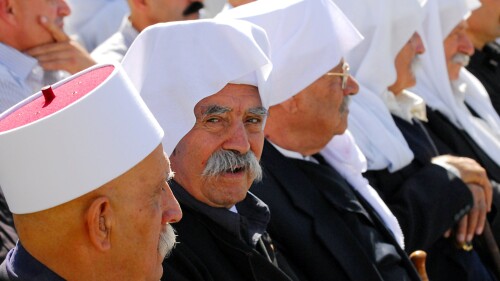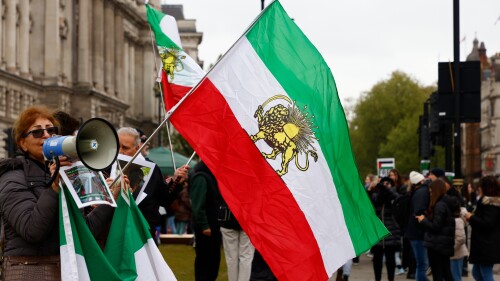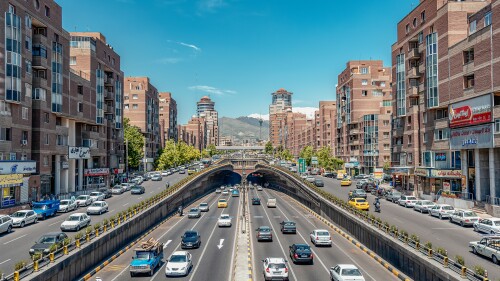On June 13, 2025, Israel attacked dozens of targets in Iran, including military and nuclear sites. So far, Iran’s state media confirm the elimination of many high-ranking officials, including Hossein Salami, the commander in chief of Islamic Revolutionary Guard Corps, and Mohammad Bagheri, chief of staff of the Armed Forces. Israel also hit the key nuclear enrichment site in Natanz several times, causing the closure of Qom-Isfahan highway.
In a video statement, Israeli Prime Minister Benjamin Netanyahu emphasized support for the Iranian people. However, some analysts fear that Iranian people might rally behind the regime, as they did during the Iran-Iraq war. While the conflict is still developing, the two wars are not.
It is the regime in Iran, not a foreign power, that initiated this war.
The Iran-Iraq war began when Iraq invaded Iran in 1980. Though Saddam Hussein’s rationale for starting the war was to prevent the Islamic Republic from spreading its ideology, he was himself an extremist, responsible for the murder of thousands of Iraqis. What sets this situation apart from the attack by Israel is that Israel is a democracy that tries to defend itself from a state whose daily chant since 1979 has been “death to Israel.” It is the regime in Iran, not a foreign power, that initiated this war.
In the war with Iraq, Saddam aimed to annex Iranian territory and launched attacks on Iranian civilians. Israel precisely targets nuclear sites, military bases, regime officials, and nuclear scientists. Israel neither seeks to occupy Iran nor annihilate it as a nation. Iranian people showed their appreciation to Netanyahu’s Nowruz [Persian New Year] statement and for using Persian words to address Israel’s desire to build a long-lasting friendship between two nations.
Unlike with Iraq in the 1980s, Iranians see Israel as an ally. Unlike Arabs, Israel and Iran had not fought a war for more than two thousand years prior to the establishment of the Islamic Republic in 1979. In recent years, the alliance between the Iranians and Israelis gained momentum when the Israeli government invited exiled Iranian Crown Prince Reza Pahlavi to Israel in April 2023. That visit marked a historic moment in the relationship between the two nations with the interest in restoring bilateral ties and extending the Abraham Accords to potential Cyrus Accords after regime change in Iran.
After the October 7, 2023, Hamas attack on Israel, ordinary Iranians supported Israel. Iranians chanted against the Palestinian cause in stadiums. Iranian political prisoner Fatemeh Sepehri released a video from Iran in support of Israel and condemning Hamas. Soon, photos emerged from graffiti on the buildings in Iran, showing Iranians calling on Israel to strike the regime. This became a trend in Iran.
There was no analogous support for Iraq during the Iran-Iraq war because Iraq was not an ally with shared interests.
Outside, Iranian dissidents often raise the flag of Israel with the lion and sun national flag of Iran in demonstrations for Iranian liberation. There was no analogous support for Iraq during the Iran-Iraq war because Iraq was not an ally with shared interests. For several years, Iranians have struggled against the Islamic Republic. The anti-regime trend of the Iranian uprising gained momentum starting with the 2017 protests, involving various segments of society. The level of political dissatisfaction in Iran in recent years differs from when Saddam started the war just a year after the Islamic Revolution. Throughout the years, Iranians have had the chance to see the regime violate its promises and victimize ordinary people; this has led to a deep ideological divide between the regime and the people.
As Israel continues its strikes in Iran, Iranian dissidents cheer the news of the elimination of the Islamic Revolutionary Guard Corps officials. “Hossein Salami, the murderer of 80 kids and 500 Iranian citizens in the 2022 uprising, and 1,500 Iranians in the 2019 protests, has been killed,” Marzieh Adinezadeh posted on Instagram. She is the sister of Abolfazl Adinezadeh, the Iranian teenager killed in the 2022 uprising. Another Iranian dissident posted on X the photo of eliminated regime officials, mentioning, “Even after the overthrow of the regime, we likely wouldn’t have found them for punishment.”
The Iranian people have had enough. They will not rally around a regime so many despise.







